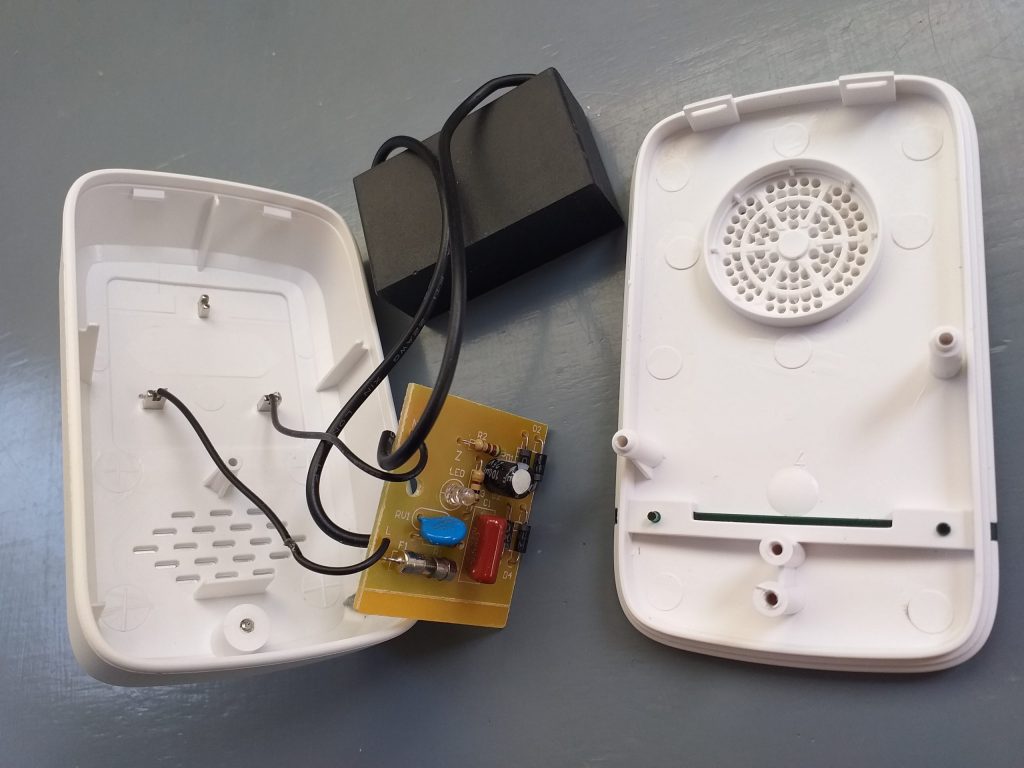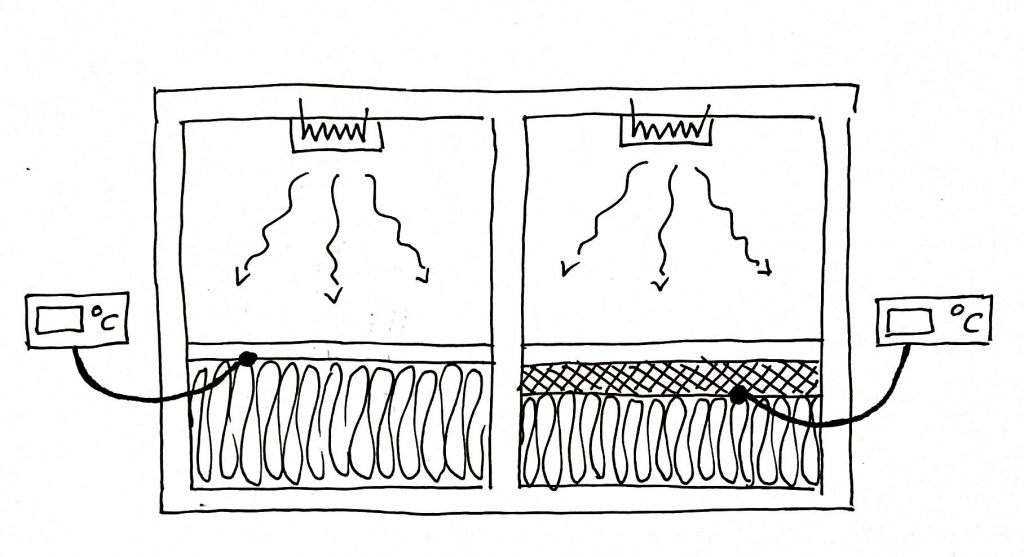Most people who understand the physics of heating systems will understand why the claims for energy-saving boiler-water additives ring hollow. But similar products (possibly the same ones with different labels) are now being touted for central chiller systems and it is evident that some users have fallen for them. Time to look at these new claims.
First, as a quick potted revision of the context, I’ll describe an air-cooled chiller with ordinary basic control:
- Heat is abstracted from the building by means of a closed loop of chilled water leaving the chiller at a set temperature and returning at a higher, and variable, temperature.
- The water boils refrigerant in a heat exchanger called the ‘evaporator’ which operates at a temperature just below the chilled-water set point (the difference, called the approach temperature, is typically 2°C or less).
- After compression the refrigerant (now at elevated temperature) passes through an air-cooled heat exchanger called the ‘condenser’ which runs maybe 10-15°C hotter than ambient. Here latent heat is lost from the refrigerant, which condenses back to liquid.
Thermodynamically the key thing is the temperature ‘lift’ in the refrigerant between the evaporator and condenser. As users we are interested in the coefficient of performance (CoP) of the machine, which represents the ratio of cooling power out to electrical power in. The theoretical CoP is given by the formula:
Tc/(Th-Tc)
Where Tc and Th are the absolute refrigerant temperatures in the evaporator (cold) and condenser (hot). Let’s put some numbers on this as an example:
- Chilled water set point: say 6°C. This is self-evidently fixed.
- Evaporator approach temperature: let’s say 2°C. This is the thing which we might be able to influence by improving heat transfer.
- From (1) and (2) above we have an evaporator temperature (Tc) of 6-2=4°C or 277K
- Ambient air temperature: let’s go for 35°C
- Condenser approach temperature: let’s say 12°C
- From (4) and (5) we would have a condenser temperature (Th) of 35+12=47°C or 320K
So our theoretical CoP is
Tc/(Th-Tc) = 277/(320-277) = 6.44
(actual CoPs are always lower but that won’t matter if all we want is a comparison)
Now let’s repeat the calculation with an evaporator approach temperature of 1°C instead of 2°C. This means Tc will go up from 277 to 278K and our new CoP will be:
Tc/(Th-Tc) = 278/(320-278) = 6.62
This is slightly less than a 3% improvement, but even that could well be an exaggeration because it assumes (a) that there was scope to reduce the approach temperature in the first place and (b) that poor heat transfer from the chilled water was the cause. Actually if the chilled water system is clean and properly treated it’s unlikely to be the problem: it’s a closed loop so contaminants won’t be getting in. In fact if the evaporator approach temperature is too high the reason is far more likely to be loss of refrigerant, or unbalanced distribution in the chiller, or oil in the circuit, none of which is affected by water treatment. It follows that if you suspect that your evaporator approach temperature is higher than it should be, look to ordinary maintenance steps first before anything else.
Vendors of additives will point to possible heat-transfer improvements within air-handling units or room air conditioning units. This is a red herring. These don’t affect the cooling load presented by the building, which is entirely and solely dictated by its heat gains and control settings.
Finally if anyone shows you a case study demonstrating an improvement, be skeptical. It’s far more likely they made the gains by cleaning the condenser coils, enabling evaporative cooling, servicing the chillers, or raising the chilled-water set point. These proven solutions are all things which perhaps are opportunities for you to exploit today.
Need training on energy management? Visit vesma.com/training


